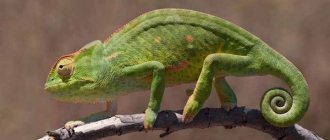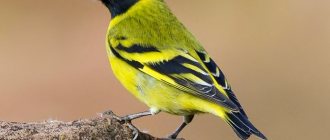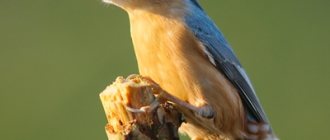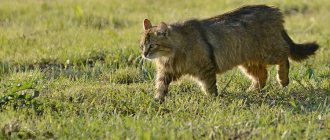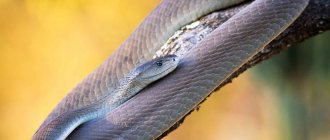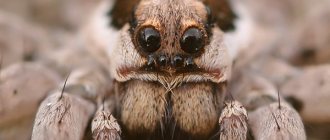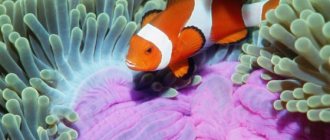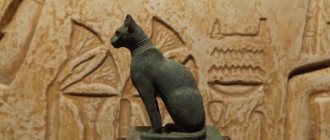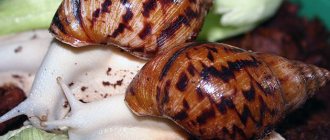Description and features
The ferret (also known as the furo or domestic ferret) is a mammal from the mustelidae family that is a pet. This is a small animal, distinguished by its activity and cheerfulness. Frets are available in white, black, brown, and mixed colors. Less often you can find an animal of a golden hue, like the ferret in the photo .
Domestic ferrets are small compared to their wild counterparts: males weigh up to 2 kilograms, females - only 1.2 kilograms. The ferret grows up to 46 centimeters in length. The tail reaches a length of 13 centimeters.
The ferret has a long body that is flexible and elastic. Thanks to its strong paws, the animal develops a fairly high speed while running and is an excellent swimmer. Ferrets have long and sharp claws. The muzzle is elongated, with small oblong ears. The nose is usually a light pink shade, but dark pigment can also occur.
Walking a ferret, interaction
The ferret is walked only on a leash and in a harness, getting used to them in advance and in the apartment . The equipment is put on daily and the ferret is led around the house, gradually increasing the time spent in it. With a tight harness, the ferret refuses to walk, clinging to the floor. Check the tension - 2 fingers should fit under the strap freely.
Avoid exercise if it is very hot outside or if it is snowing/raining. In the first case, the pet is at risk of heatstroke, in the second - hypothermia and a cold. Communication with a ferret also requires skill. He is kept in a cage until he stops biting and given treats through the bars. Once your pet has gotten used to you, proceed with the following steps (preferably with a slightly sleepy ferret):
- Put on old leather gloves and hold the ferret in your hands.
- Pet him, treat him with something and talk affectionately.
- When trying to bite, lightly click the ferret on the nose, accompanied by the word “ew”.
- After that, feed him again.
- Continue to pick up your pet, gradually increasing the contact time.
Important! In case of increased aggression, water from a shower hose will help. Douse your ferret with it whenever he tries to bite you. After that, try to establish communication again.
Once the furo has stopped biting your hands, take off your gloves and feed him without fear.
Kinds
There are 3 types of frets in total:
1. The black-footed or American ferret is a medium-sized predator; an adult reaches a mass of 910 grams and 40 centimeters in length. At the moment it is an endangered species, since 1967 it has been listed in the Red Book of North America.
In 1937, the American ferret was completely exterminated in Canada, but at the moment the situation associated with the population of the species has improved significantly. Black-footed ferrets live on the prairies, but can often climb mountains. In nature, their diet mainly consists of gophers and prairie dogs. In a year, a ferret of this species can consume about 100 prairie dogs.
2. Steppe or light ferret - Being the largest representative of its genus, it can weigh up to 2 kilograms, and their body length is 56 centimeters, while the tail grows up to 18 centimeters. Compared to its relatives, it has disproportionately short, but strong limbs, with the help of which it climbs holes well.
The steppe ferret differs from other species in having long hair, but it is quite rare. The guard hair is dark in color, the down is beige, coffee or milky. The ferret's wild relative lives mainly in Western, Eastern and Central Europe. The predator settles in open areas. In the steppe, it hunts for mice, rats and hamsters, which it most often eats. The ferret often feeds on lizards, bird eggs, and fish.
3. The forest or common polecat (dark or black polecat) is a typical representative of the mustelid family, having two domesticated forms: ferret and furo. The ferret has a bright sable color, is very active, curious and cheerful.
In addition, the ferret can be trained at home, and can also master the skills of walking in a litter box and walking on the street in special equipment. Furo is an albino and has red eyes. The forest ferret has an elongated body ranging from 36 to 48 centimeters in length, weighing up to 1.7 kilograms. The basis of the diet of trochees are mice, rats, frogs, toads, bird eggs and large insects.
How to properly keep an animal
Keeping a ferret at home consists of certain rules.
Note!
Domestic hedgehog - a review of the best hedgehog breeds to keep, all the features of the pet from feeding to living conditions! + photos and videos
Domestic goat - an overview of the features of keeping goats, how to care for them and what to feed them, as well as diseases, treatment and prevention of diseases in the review!
Sheep - learn everything about keeping sheep, features of living conditions, diet and the main characteristics of sheep as a pet!
The ferret sleeps for most of the day, and is active the rest of the time. Therefore, she cannot stay in a cage for a long time. It is better to provide your ferret with a separate room for walks. You need to hide small things in the room and turn off electrical appliances.
A ferret is resting in a cage. The cage must be strong, with thick rods. Otherwise, the animal can bend them and simply run away.
You can use sawdust to fill your home. The main thing is to change them every 2 days, since frets have an unpleasant odor.
It is necessary to put sand in a container in the cage to provide the animal with a toilet. Ferrets are quite clean animals; they immediately get used to a specially designated place for the toilet and will regularly visit it.
Lifestyle and habitat
In nature, adult ferrets lead a solitary, independent lifestyle. They are not friendly enough with each other, they are wayward and sometimes they can even be aggressive. Despite this, Hori are very playful and inquisitive, and relatively affectionate with humans.
Most of a ferret's life is spent sleeping. As a rule, on average they can sleep 3-4 times a day, and their sleep is very deep; it is practically impossible to wake them up. And it is undesirable to do this, because waking up the animal during sleep is dangerous for its health.
Frets are unique swimmers. Thanks to their strong and powerful limbs, they are able to swim very well; often in nature they can be seen in the process of swimming across a river or other body of water. Ferrets are nocturnal and are especially active from late evening until dawn.
The fret lives in the steppes, on forest edges, and in the forest. The animal prefers to settle in deserted areas, but can stop near farms where there are chicken coops.
Preparing your place of residence
Please note that the ferret has sharp claws and teeth, coupled with inexhaustible curiosity . It is ideal if your home has walls covered with decorative stone and tiled floors. There are no gaps (for example, between the wall and furniture) where the fret will try to squeeze in: there it can get stuck and get injured.
In any case, the pet will need a cage (about 1*1*1 m), where it will occasionally rest, eat, drink and relieve itself. The following items are installed in the cage:
- food bowl;
- drinking bowl;
- house with soft bedding;
- hammock (optional);
- tray (without filler).
The house is often replaced by a shoebox with rags. Sometimes a polypropylene pipe is placed in the cage as a reminder of burrow life in nature. Many owners of frets allow them to move freely around the apartment, but always under supervision.
Ferrets often steal tasty morsels, stuffing them into secluded corners. This must also be monitored so that the reserves do not rot. Don't forget that the furo will dig the soil in flower pots and taste the objects it encounters, including furniture, wires, baseboards and shoes. This is why your ferret needs to be controlled.
Nutrition
When feeding an animal such as a domestic ferret , do not forget that it is a predator. This means that the diet is based on muscle meat and offal. In the wild, ferrets rarely eat vegetables and fruits.
If this happens, then they need to eat only foods that do not contain large amounts of fiber. Also, under no circumstances should you give your pet viscous, sticky and sweet fruits and vegetables, or nuts.
It is important to remember that if you violate the rules of feeding your pet, namely, give dangerous and harmful products to their health, then the ferret can become seriously ill and may even die. Therefore, it is very important to follow the diet that is typical for a predator in its natural environment.
First you need to study what kind of meat the animal should eat. Ferrets do not digest plant proteins (such as soy). So what kind of meat can you still give to your pet?
Meat: chicken, beef, lamb, turkey, duck, quail.
Sea fish: hake, pollock, sea bass, capelin, cod, sprat, bearded vulture, greenling, trout, mackerel, horse mackerel and others. Fish contains phosphorus, which is essential for predators.
Porridge (in small quantities): buckwheat, oatmeal, rice.
Fretka also needs to be given eggs and cottage cheese. Under no circumstances should you try to feed your animal milk; ferrets are lactose intolerant. It is very difficult to reproduce natural nutrition that is close to the natural environment (especially if you are a novice owner of an exotic animal).
You need to give your pet all the vitamins and microelements necessary for comfortable digestion, and also observe the ban on feeding dangerous foods. If you are not ready to take on such responsibility, then in our time you can turn to a special line of food for ferrets.
A well-formulated food contains all the necessary elements for your pet. It is worth paying attention not only to popular lines of food (they are not always of high quality), but also to the composition. Dry food should contain a high percentage of dehydrated or fresh meat. Usually, food of at least super-premium class has a good composition, and this is what you should feed your ferret.
(!) Dangerous foods: sweet, fried and smoked foods, chocolate, flour products, nuts.
Owner reviews
Everyone who has acquired a ferret warns that the apartment must be perfectly clean, otherwise the pet will die . The animal puts everything it sees into its mouth, and often the cause of death is an ordinary plastic bag. The cage should be very large and with all kinds of toys.
Give him the opportunity to organize a warehouse, but periodically look there for stolen passports, phones and socks, and also throw out rotten food. Buy expensive food like Bosh (for different ages): let it always be in a bowl. Pamper your ferrets with warm baths as they love to dive and swim. Keep in mind that a ferret has an excellent metabolism, which is why he goes to the toilet 100 times a day. In order not to wash the floors around the clock, train him to use the tray from childhood.
Reproduction and lifespan
Regardless of the species, the breeding season for ferrets is year-round, but by spring their genitals enlarge. Clear signs of preparation for mating are visible for about one month. In trochee puppies, puberty begins at 6 months. Females should be bred upon reaching 10 months, when the genitals are sufficiently developed.
Mating can be done 2-3 weeks after the female’s loop swells. If mating occurs earlier, then only up to 4 puppies are born. If mating is timely, the litter will be much larger - up to 12 babies. If mating occurs later, there will be no offspring.
Pregnancy lasts about 40-45 days. If the birth is successful, the female gives birth to deaf, blind and toothless puppies. The cubs open their eyes after 1 month. On average, horis give birth to offspring up to 2 times a year. Indoor ferrets can go for walks up to 4 times a year. The ferret may not go on a spree if you do not monitor the animal’s diet.
By the age of one month, a ferret weighs about 150 grams. Domestic animals are usually acquired at this age, since they can easily survive without a mother. Already at 6 months, the ferret practically stops growing, and the need for large amounts of food can sharply decrease.
If you feed your pet well, it can outgrow its wild counterparts. However, even here you need to know when to stop. Males can develop limb disease from overfeeding, so young ferrets should be given more active exercise. All lovers sooner or later are interested in the question: how long do ferrets live? On average, their life expectancy is 10 years.
Caring for a ferret at home
To prevent feces from being scattered in the corners, the tray is securely fixed. If the ferret has not learned the skill of emptying into a tray from its mother, it will have to be taught something like this:
- Take the animal in your arms immediately after it wakes up for about five minutes.
- If you notice signs of anxiety (the animal backs away and raises its tail), place it in the tray.
- After successfully completing the act, reward your pet with praise and treats.
If excrement appeared on the floor while the ferret was walking around the apartment, scold it and place it in the enclosure. Place him there about once every half hour until the urine/feces remain in the tray.
If you want to wash your pet, use shampoos for ferrets, cats or children. The ferret is washed in a bath with warm water no higher than +40°C, rinsing off the foam in the shower. After the bath, dry him with a soft towel and take him to a box with clean rags, where he will complete the drying process.
Important! The ears of a healthy animal are not cleaned, but they are cleaned of brown plaque (if necessary) with a cotton swab with Vaseline, without going deep into the ear canal.
Domestic ferrets require care because they are deprived of the ability to dig frequently, which is why their claws grow. They are trimmed once a month with a cat's nail clipper or ordinary scissors, trying to bypass the blood vessel. If you get it, lubricate it with iodine. Enzyme-based preparations that not only mask but neutralize odors will help get rid of the specific aroma of a ferret. The most popular means:
- Zoosan (Russia);
- Miracle (USA);
- Dezosan (Russia).
They are also used to process the tray and remove marks.
